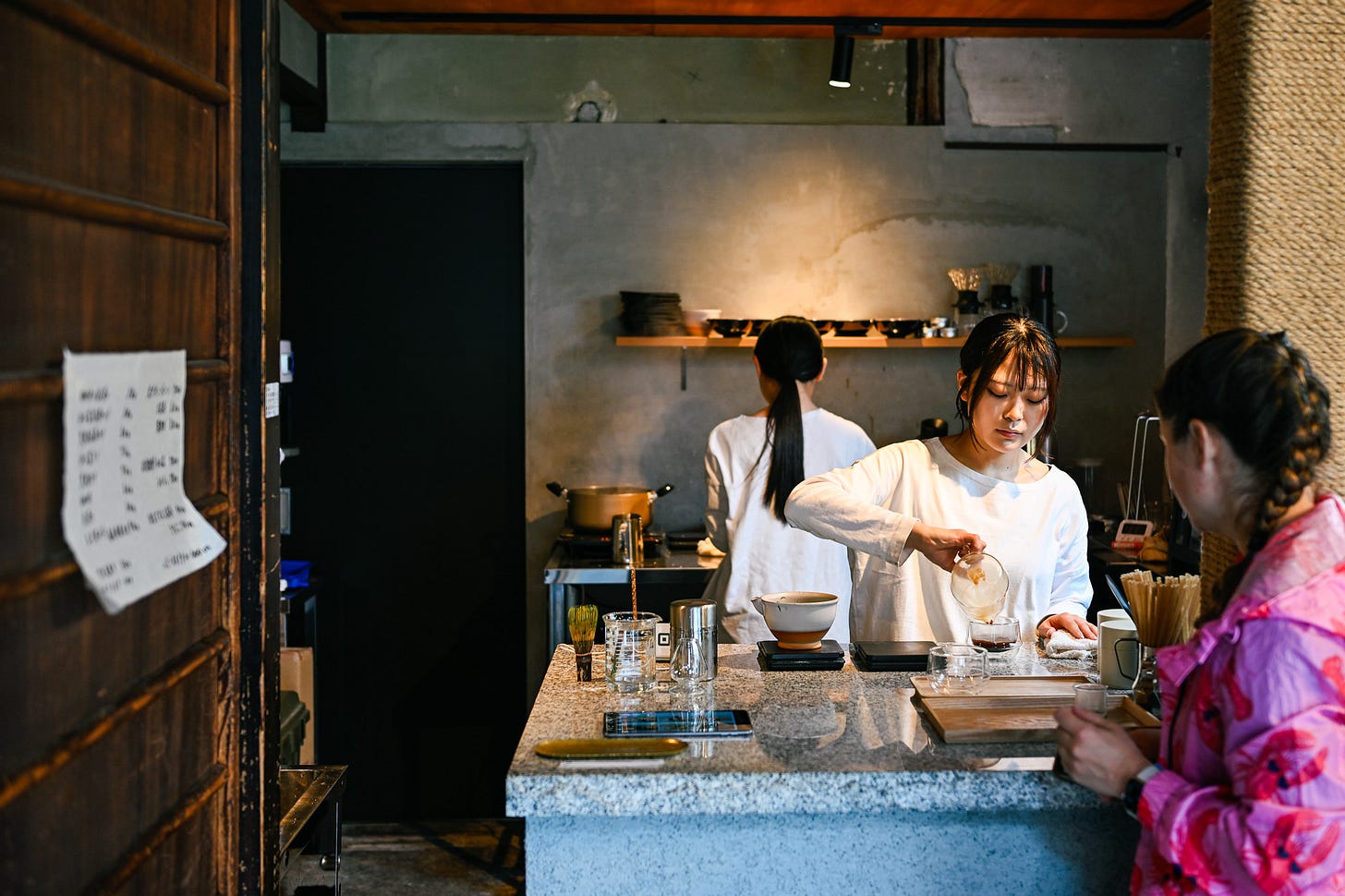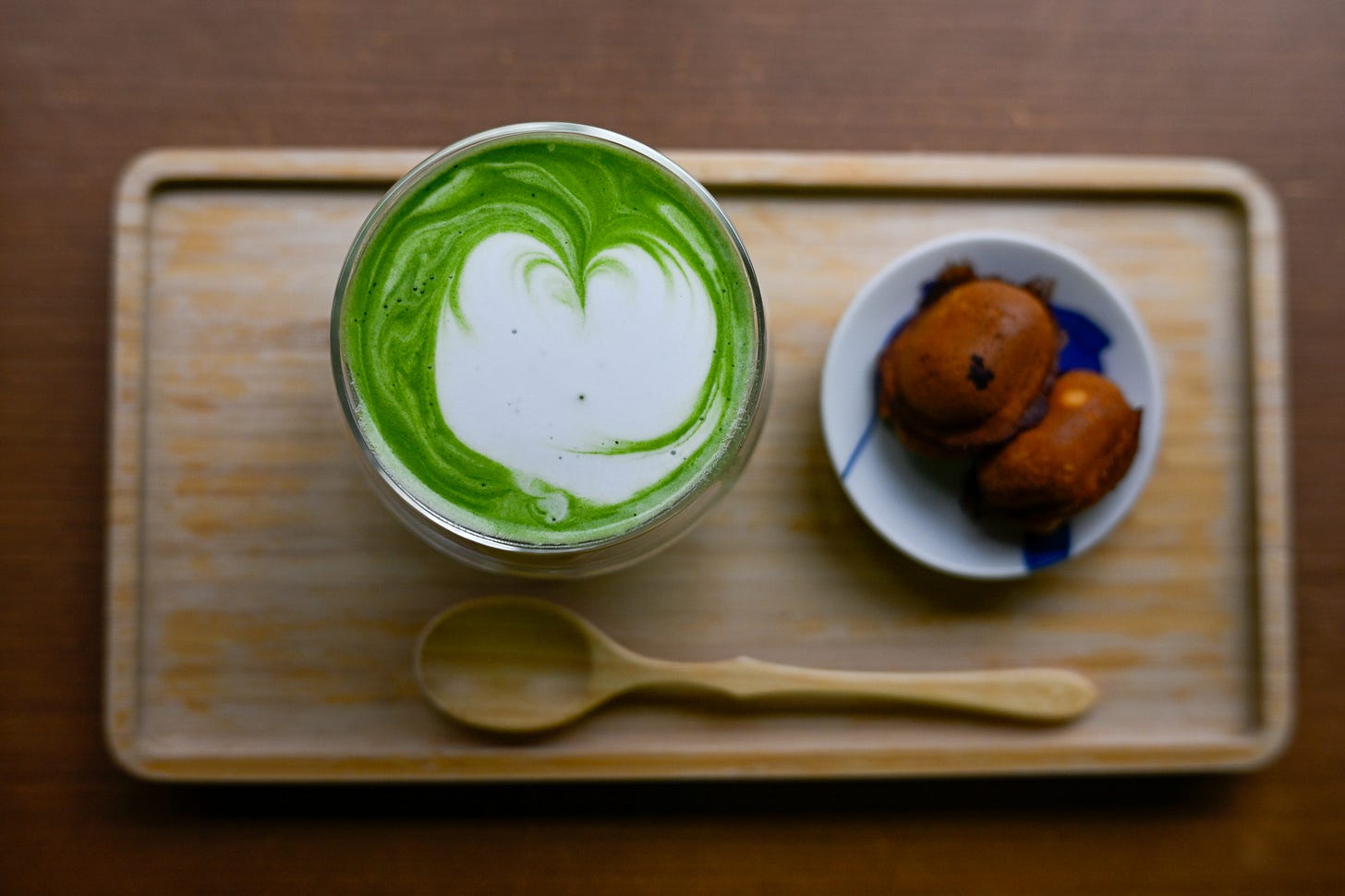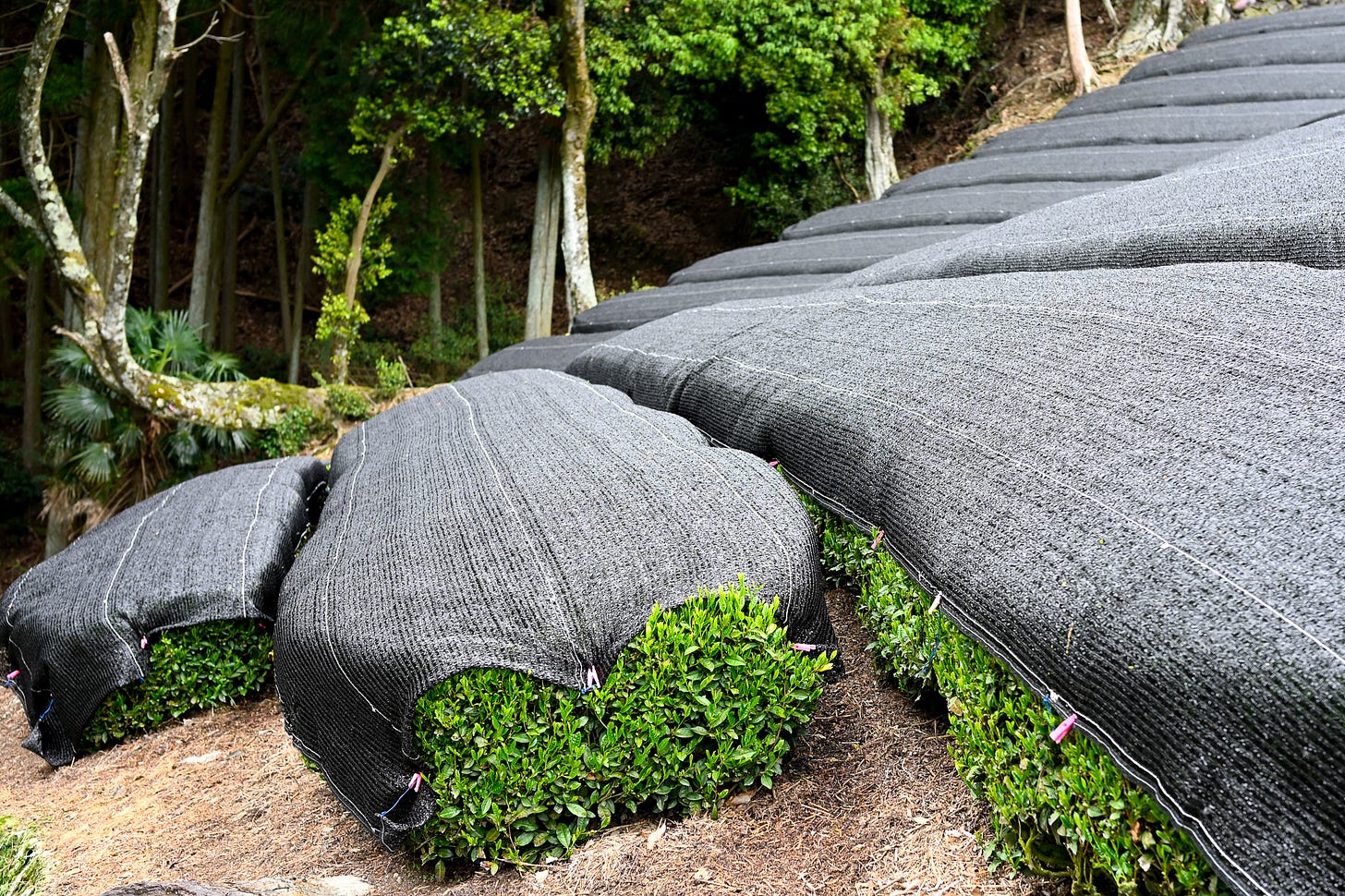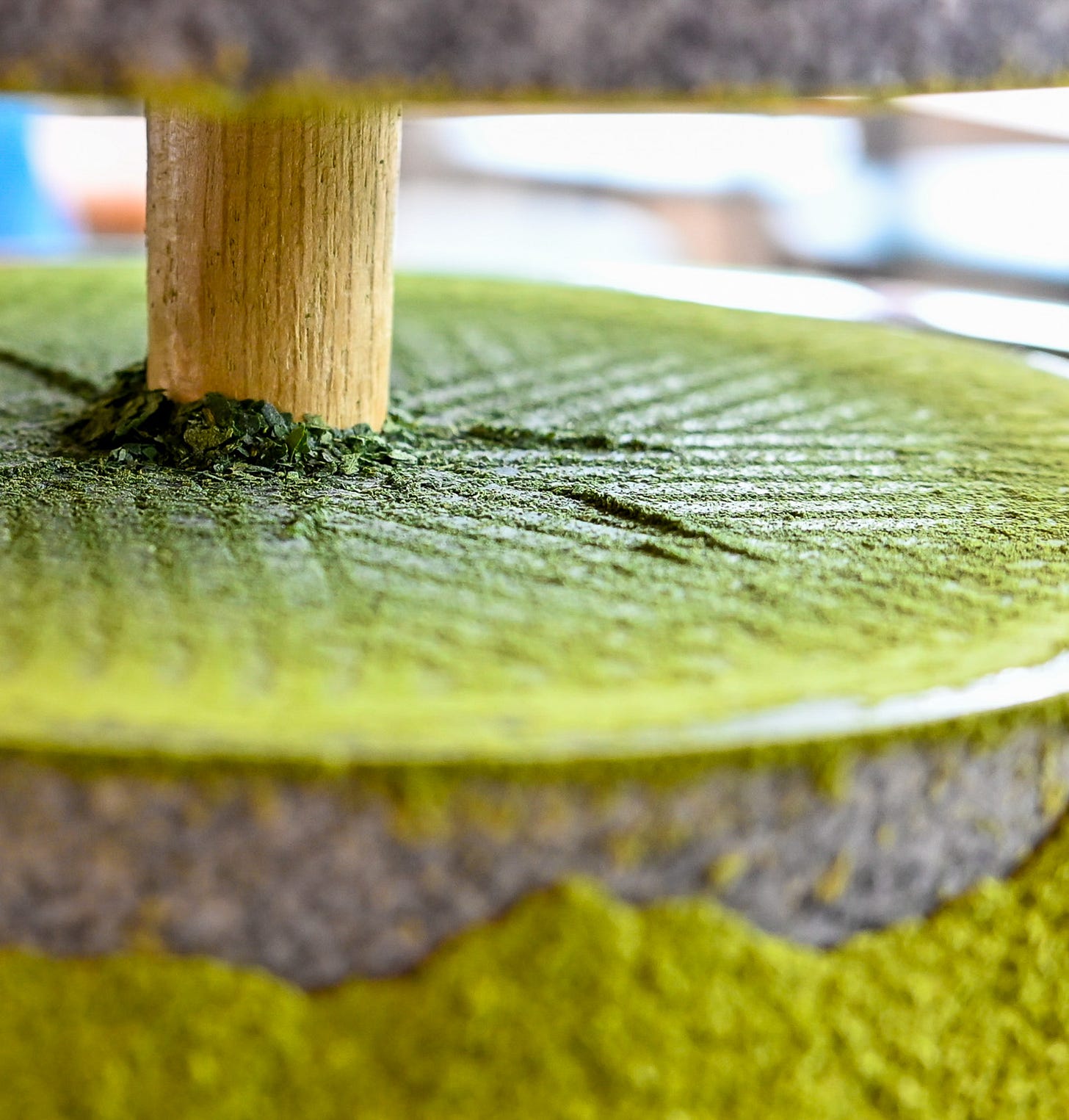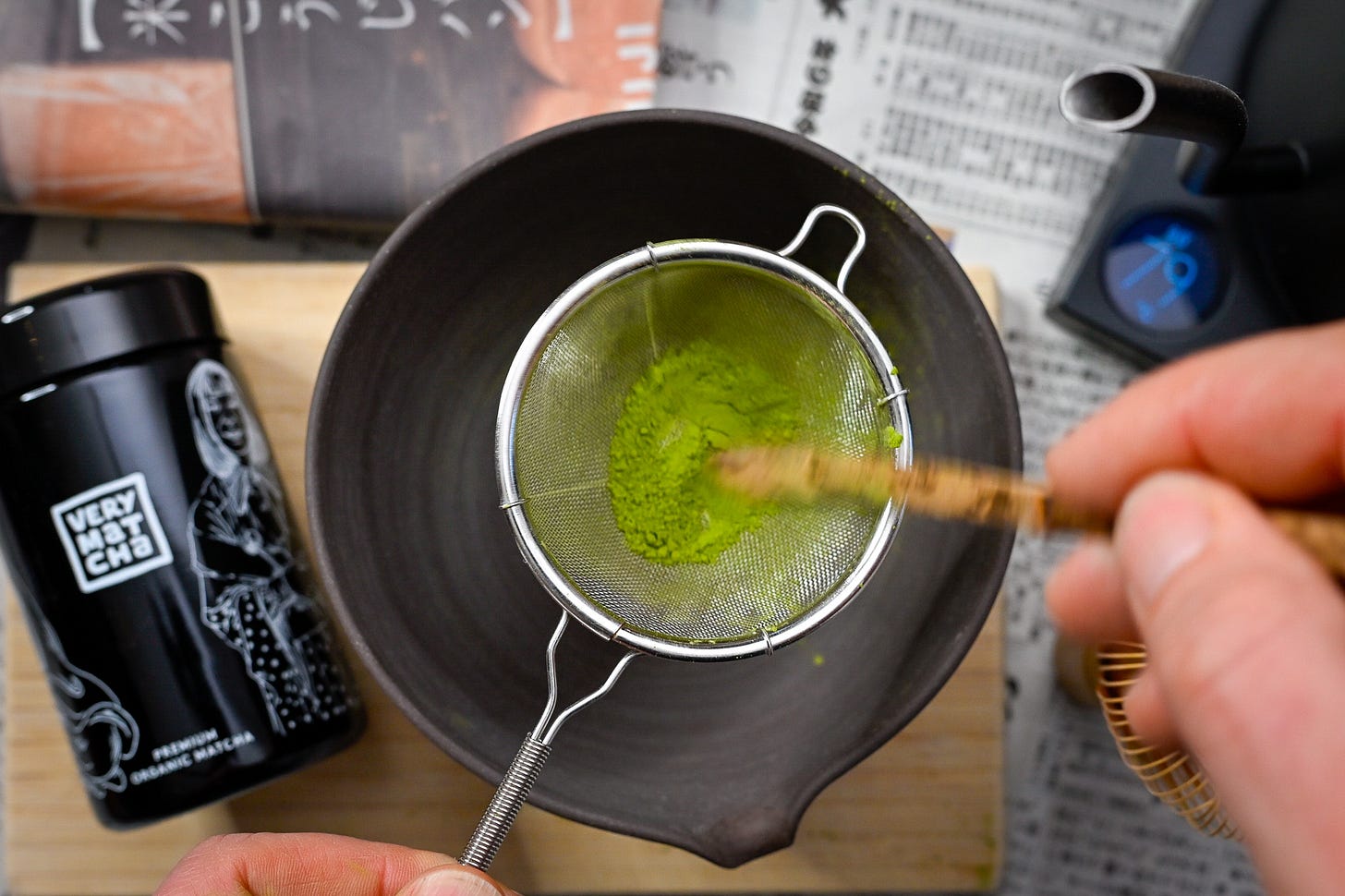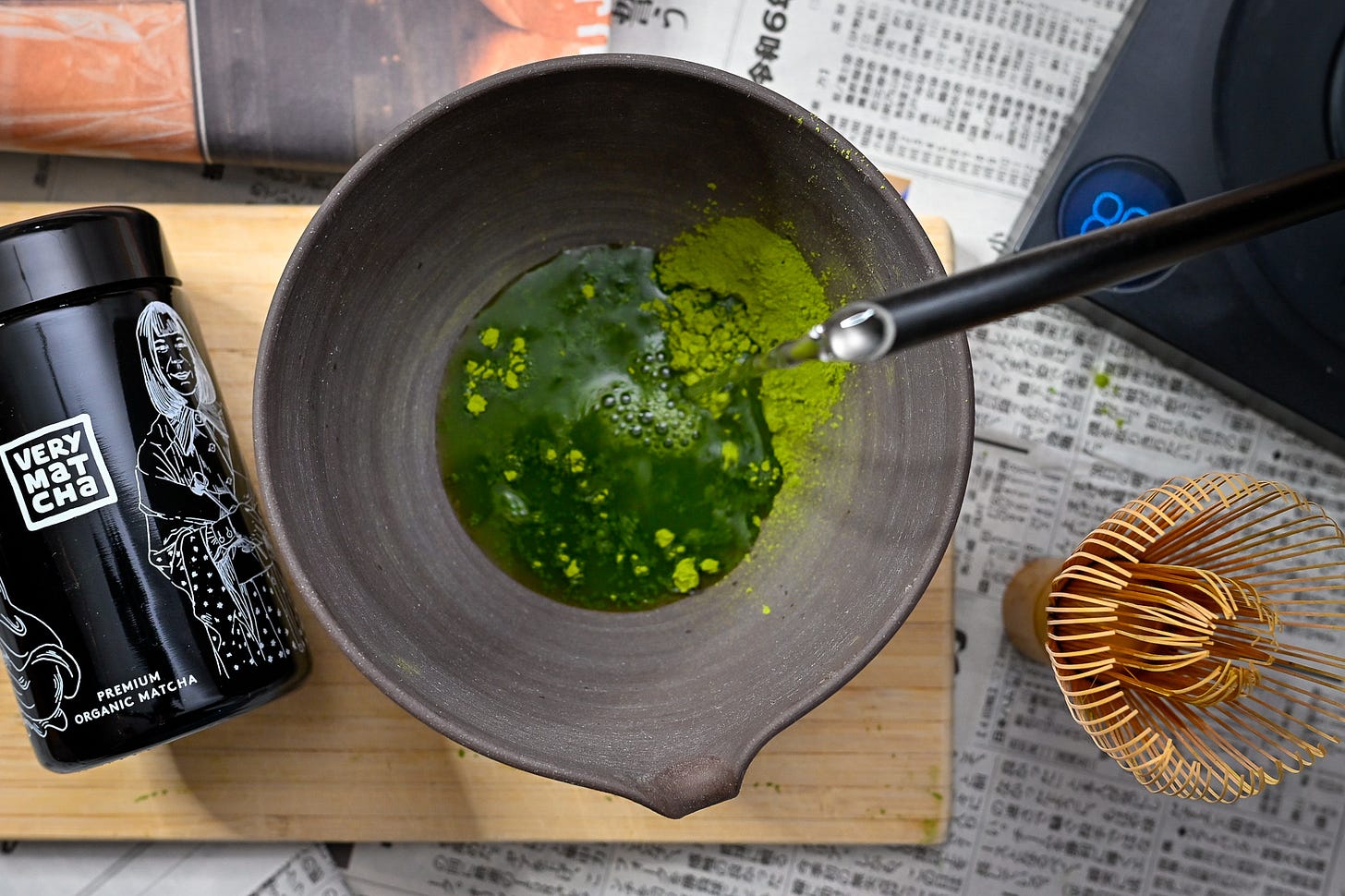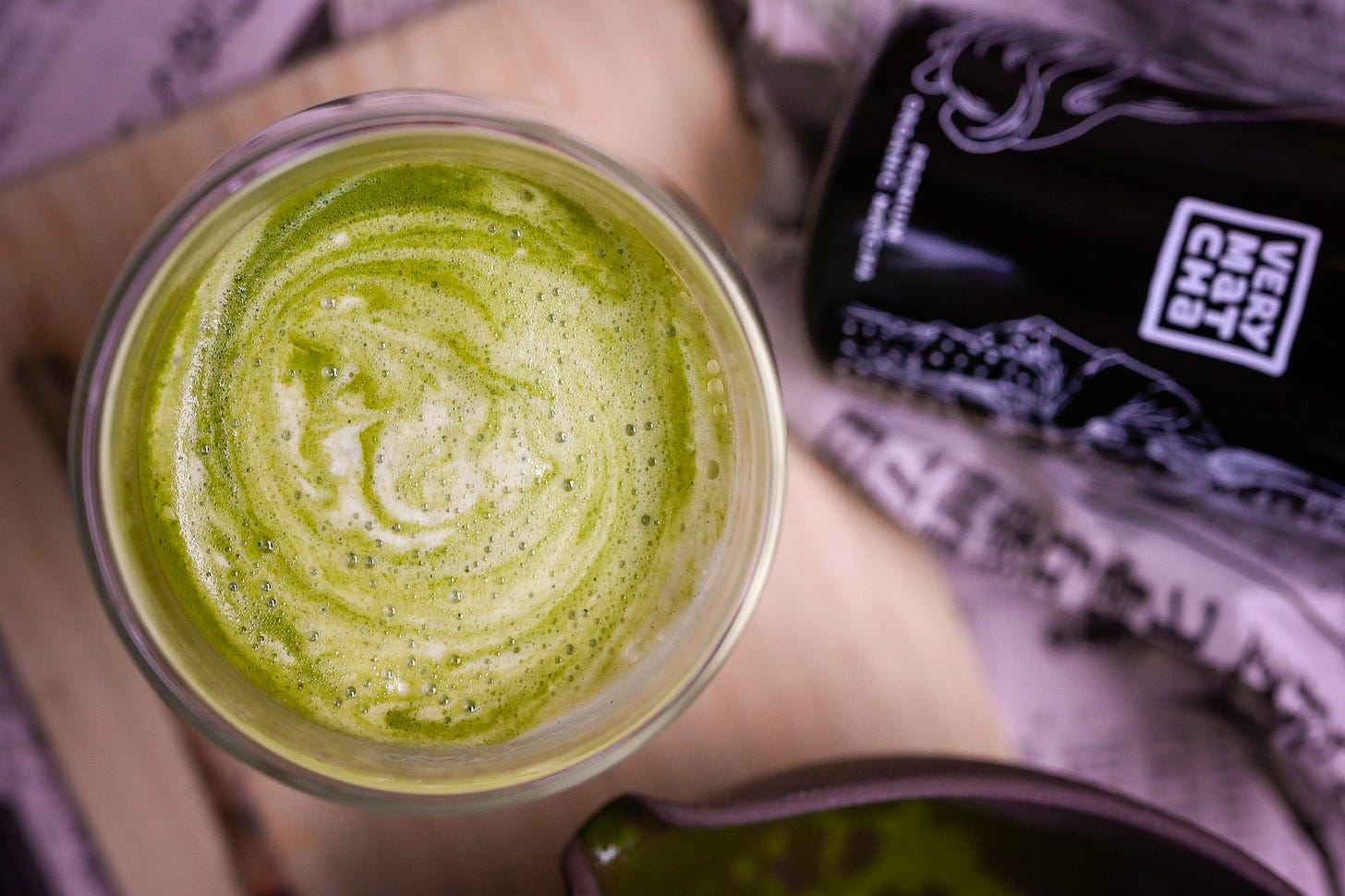In the heart of Kyoto, tucked inside a lovingly restored machiya (a traditional townhouse), you’ll find Totaro Café. This tiny spot marries old-school Japanese tea culture with sleek, modern barista craft. The result? A Matcha Latte so smooth, rich, and balanced you’ll think you’ve never truly tasted matcha before.
We visited Totaro and watched their baristas up close. Here’s what we learned — and how you can recreate a perfect Matcha Latte at home.
This post is an adaption from our original japanese Matcha Latte Recipe on verymatcha.de
What Is a Matcha Latte?
A Matcha Latte is a creamy, energizing drink made from finely milled Japanese green tea (matcha) blended with hot, frothed milk (or plant-based milk). Think of it as a cappuccino or latte macchiato, but instead of espresso, you use a concentrated “matcha shot”. The result: a bracing, umami-rich sip with caffeine levels similar to coffee, plus a steadier, calmer energy kick.
Hot or iced, the Matcha Latte can be as cozy or refreshing as you like.
What Is Matcha?
Matcha isn’t just green tea powder. It’s a special kind of Japanese green tea — shade-grown and stone-milled into an impossibly fine, electric-green powder. Traditionally used in Japanese tea ceremonies, matcha is prized for its subtle sweetness, creamy umami, and focus-enhancing effects.
Why so special?
Shade-grown: The tea plants are covered before harvest, forcing them to produce more chlorophyll, amino acids, and flavor compounds like L-theanine. This process deepens matcha’s flavor and gives it that vibrant hue.
Only the Best Leaves: The youngest, most tender leaves are plucked, stripped of stems and veins (becoming “tencha”), then slowly ground into matcha.
Buddhist monks first used matcha for better concentration during meditation. Samurai drank it before battle for alertness. Aristocrats sipped it during high-stakes negotiations. It’s a tea with a lineage of calm focus and ritual.
Which Matcha Is Best for a Latte?
Don’t skimp here. Milk amplifies flavors — the good and the bad.
Culinary/Cooking Grade: Cheap, bitter, and sometimes fishy. Milk might mask some bitterness, but it also magnifies off-flavors.
Ceremonial Grade: Lovely, delicate, and subtle. But too subtle for milk. Those fine notes get lost in the foam.
Barista Grade: The sweet spot. Blends specifically designed to shine in lattes. Think bold umami, vibrant color, smooth finish.
In Japan, baristas use a dedicated “Barista Blend” matcha optimized for milk-based drinks. It’s balanced, intense, and harmonizes perfectly with the creamy richness.
Which Milk Works Best?
Cow’s milk is the gold standard. It froths easily, creates stable foam, and complements the matcha’s flavor. But you’ve got options:
Oat milk: Smooth, mild, slightly sweet. Great for vegans.
Soy milk: Neutral and creamy.
Almond milk: Light and nutty, though sometimes less stable foam.
Coconut milk: Strongly flavored — often overpowers the matcha.
For the best results, use well-chilled whole milk or a barista-style plant milk. Heat it to about 55–65°C (131–149°F). Too hot? You’ll damage the proteins that hold the foam. Too cool? The foam won’t form properly. Aim for that sweet spot and watch your latte foam like a dream.
Matcha Latte Recipe
Total Time: 5–7 minutes
You’ll Need:
2g matcha powder (about 1 heaping teaspoon, plus a pinch for garnish)
~50ml (¼ cup) hot water at ~80°C (176°F) — not boiling
200ml (¾ cup) milk or plant milk (oat or soy barista blends are ideal)
Sweetener (optional): raw sugar, agave, or maple syrup
Equipment:
A bowl or deep mug for whisking the matcha
A fine-mesh sieve for sifting the powder
A bamboo matcha whisk (chasen) or a small milk frother
A separate glass or mug for serving
A milk frother (manual or electric)
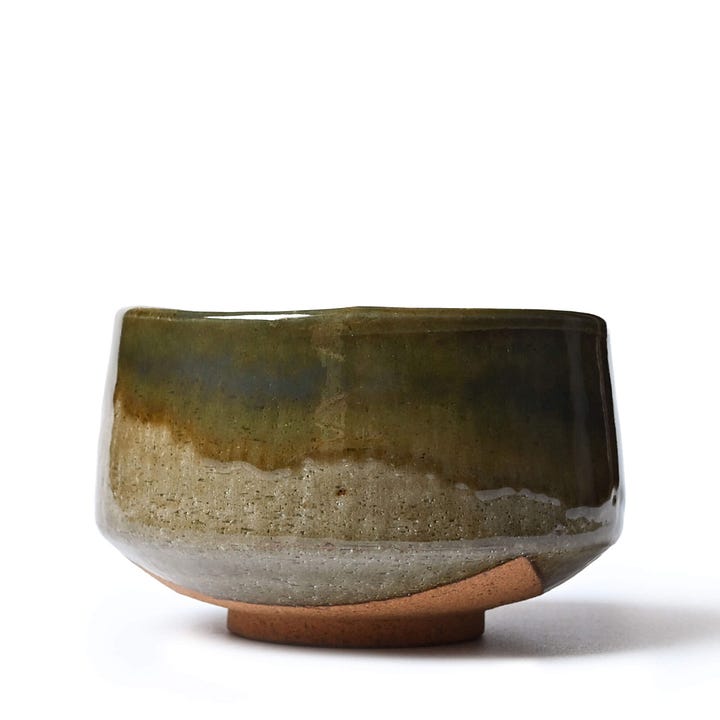
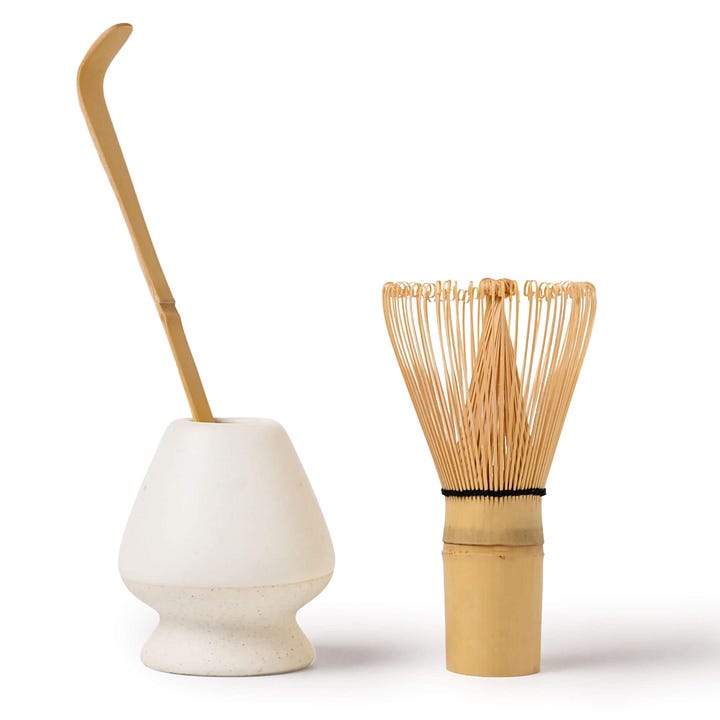
Step-by-Step:
Sift the Matcha: Use a fine sieve to sift 2g of matcha into a dry bowl. No lumps allowed.
Add Hot Water: Pour in 50ml of hot (but not boiling) water. About 80°C is perfect.
Whisk the Shot: Whisk vigorously in a zigzag pattern until the matcha is smooth and frothy. No whisk? A small kitchen whisk or electric frother works, too.
Heat & Froth the Milk: Warm your milk to about 55–65°C. Froth until you’ve got silky microfoam.
Combine: Pour the matcha shot into your serving cup. Slowly add the frothed milk. Tilt the glass and pour gently along the side to preserve that frothy top. Add a sprinkle of matcha dust for flair.
Sip. Smile. Bliss.
(Pro tip: For a vegan spin, simply swap cow’s milk for oat or soy. Just as creamy.)
Variations to Try
Golden Matcha Latte: Add a pinch of turmeric for warmth.
Vanilla Matcha Latte: Stir in a drop of vanilla extract or use vanilla-infused milk.
Protein Matcha Latte: Blend in your favorite unflavored protein powder.
Pumpkin Spice Matcha Latte: Perfect for winter. Add a spoonful of pumpkin puree and pumpkin pie spices for that cozy, seasonal vibe.
The “No-Water” Matcha Latte Hack
Skip the water step. Whisk the matcha powder directly into the milk. Results? A slightly denser, less layered drink with a uniform green hue and creamy texture. Downside? Less fancy latte art. But if you’re short on time, go for it.
Frequently Asked Questions (FAQ)
Q: How do I make it vegan?
A: Easy. Use oat, soy, or almond milk. They pair beautifully with matcha’s umami sweetness.
Q: Hot vs. Iced?
A: Same process. For iced, just add ice cubes. For a layered look, pour the hot matcha shot over cold milk and watch the colors swirl.
Q: What does a real Japanese Matcha Latte taste like?
A: Expect grassy, earthy notes with a sweet, creamy finish. Quality matcha has an umami depth — never bitter or fishy. Cheap matcha? That’s where you get off-flavors.
Q: How does milk shape the flavor?
A: Milk’s fats mellow out any bitterness and create a lush, rounded flavor. Without it, matcha can taste more intense and vegetal. With it, it’s a pillow of green comfort.
Q: How much matcha should I use?
A: Start with 2g. Adjust up or down based on personal taste. Many cafés skimp to cut costs, so go bold at home.
Q: What about sweeteners?
A: A drizzle of agave or maple syrup softens matcha’s edge without dominating. Add a touch until it fits your palate.
Q: How many calories?
A: Around 125–200 kcal per cup, depending on your milk choice and sweetener. Matcha powder itself is minimal; the milk and sugar determine the final tally.
Q: What’s the effect on the body?
A: Gentle alertness. Matcha’s caffeine plus L-theanine delivers a calm focus that lasts longer than coffee’s spike-and-crash. It’s like a steady hum instead of a jolt.
Q: How to spot good matcha?
A: Look for vivid, bright green color and a smooth, subtly sweet flavor. Quality matcha is never harshly bitter. Expect a hint of umami and a lingering sweetness that feels luxurious, not cheap.
Final Thought:
The Totaro Café in Kyoto takes a non-traditional drink and treats it with the care and respect of a tea ceremony. You can, too.
Pick the right matcha. Froth your milk with intention. Savor each sip.
After all, a perfect Matcha Latte is more than just a drink. It’s a quiet moment of focus and comfort, straight from Kyoto’s backstreets to your kitchen counter. Enjoy.




